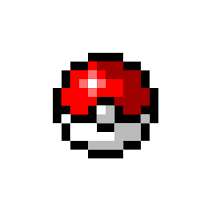"Welcome to Great League PvP: (Part 1) the basics"

#PokemonGO: Trainer Battle (aka PvP) is a feature added into Pokemon GO in December 2018. This part is going to cover the basic knowledge (more details and strategies in future articles, as I don’t want to make the post way too long. I know that most people here already know about this).Without further ado, let’s get right into the article!How does a battle work?TimeYou’re given unlimited time (though there might be more errors if you pick longer) to pick your party of 3. After you finish, click “use this party” to begin the battle.The first player to knock out all opponent’s Pokémon wins. A battle can last at most 4 minutes and 30 seconds. If you exceed the limit, the game will give you a timeout and the person with the most Pokemon remaining will win (confirmed). If both have the same amount of Pokemon left, the one with more %/number of HP will win (unconfirmed).1 turn = 0.5 seconds (i.e. at most 540 turns can occur in a battle), a Fast move lasts 1–5 turns.EnergyYou can only hold maximum 100 energy at a time. Energy is gained using Fast moves, and is lost using Charged moves.If the opposing Pokémon is at a low health and/or your Fast move is hard-hitting, consider farming it down using only Fast moves. You can use the saved energy on the next Pokémon to break the shields.SwitchingYou may switch out your Pokémon between fast moves (but NOT during). Switching has a 60-second cooldown. Stat effects and the leftover energy will not be removed after switching.You are forced to switch to another Pokémon after the current one faints, and it doesn’t count towards the switching cooldown.Switching in an unfavorable matchup is extremely crucial – knowing when to switch can turn a losing matchup or even the whole match into a winning one.ShieldingShielding is also a very important factor of a match. Shielding wisely or not wins or breaks you the match. This involves predicting shield baiting. If you successfully predicted opponent’s shield bait, you will get an advantage.Better be safe than sorry, count the Fast moves. If it might be a hard-hitting move and you think you need the current Pokémon later, just shield it. Taking a bait is better than losing a Pokémon.Shield on the right Pokémon. Protect your Pokémon as long as it has a decent matchup against the opposing Pokémon (either current or at the back of their team).Base stat buffs/debuffsThere are 9 Stat stages: 0.5 (–4), 0.5714286 (–3), 0.6666667 (–2), 0.8 (–1), 1 (0), 1.25 (+1), 1.5 (+2), 1.75 (+3), 2 (+4). Everyone starts from stage 0 at the beginning of a match. There are Charged moves that have a chance (or guarantee) to change the stage.SelfMoves like Power-up Punch (+1 stage) increase user’s Attack.Moves like Skull Bash (+1 stage) increase user’s Defense.OpponentMoves like Leaf Tornado (50% to –1 stage) lower opponent’s Attack.Moves like Acid Spray (–2 stages) lower opponent’s Defense.Charged move priorityAs of 0.159.0, Charged move priority is determined randomly. It’s a major flaw of the game as it hugely depends on luck. Imagine having a 100 energy Pokémon fainted due to CMP, losing the potential to deal a huge chunk of damage and/or break opponent’s shields. That hurts.Side note: prior to 0.157.0, how CMP was determined can be found here Fast/Charged move listCharged move mini-gameWhen you activate a Charged move, you will enter a mini-game, then “bubbles” start to appear on the screen. You have to swipe on as many of them as you can in order to maximize your damage.PokémonUnlike in raids, Great League PvP isn’t all about DPS, having both damage (good moves can make up for low attack) and bulk wins you the match. Generally, you want a Pokemon that has as high Defense/Stamina IVs as possible, as well as high enough Attack IV to reach certain breakpoints. However, species/moves matter more than IVs, so don’t be too depressed even you get one with low IVs.Good in generalSpecies like Medicham, Azumarill, Bastiodon and Skarmory have great stats, typings and decent moves to back up, so they are pretty good for Great League. More onto that in future articles.Bad in generalDepending on the match situationSpecies like Gengar and Alakazam, which are glass cannons in raid battles, aren’t that useful in Great League. However, if they DO land a Charged move (especially ones with high base Power), they will OHKO anything frail that doesn’t resist it (even the mighty tank, Umbreon, can barely take one Focus Blast from Gengar). These Pokemon usually need to have shield/energy advantage to win matchups consistently. Unless you need its specific niche, I would not advise using them, being an “ATM” (opponent farms you down using fast moves) if you’re stuck in an unfavorable matchup.Just plain badSpecies like Lopunny, despite having great stats, aren’t useful because of crap moves. Sorry, rabbit, but unless Niantic gives you better moves, it’s better for you to stay on the bench.And yes, Ash’s starter, Pikachu, has very great moves (Thunder Shock + Surf + Wild Charge), but not enough stats to back up. Such a shame that we can’t power it up beyond level 40 (and win the matches that it should) despite being a fan favorite.ConclusionI hope this article helps begginners understand the basics. In the near future, expect the meta, some tricks, and more parts. Stay tuned!Edit: /u/Stogoe pointed out picking the team longer might result in more errors in battle. via /r/TheSilphRoad https://ift.tt/2q1Pz5L
"Welcome to Great League PvP: (Part 1) the basics"
!["Welcome to Great League PvP: (Part 1) the basics"]() Reviewed by The Pokémonger
on
15:40
Rating:
Reviewed by The Pokémonger
on
15:40
Rating:


No comments